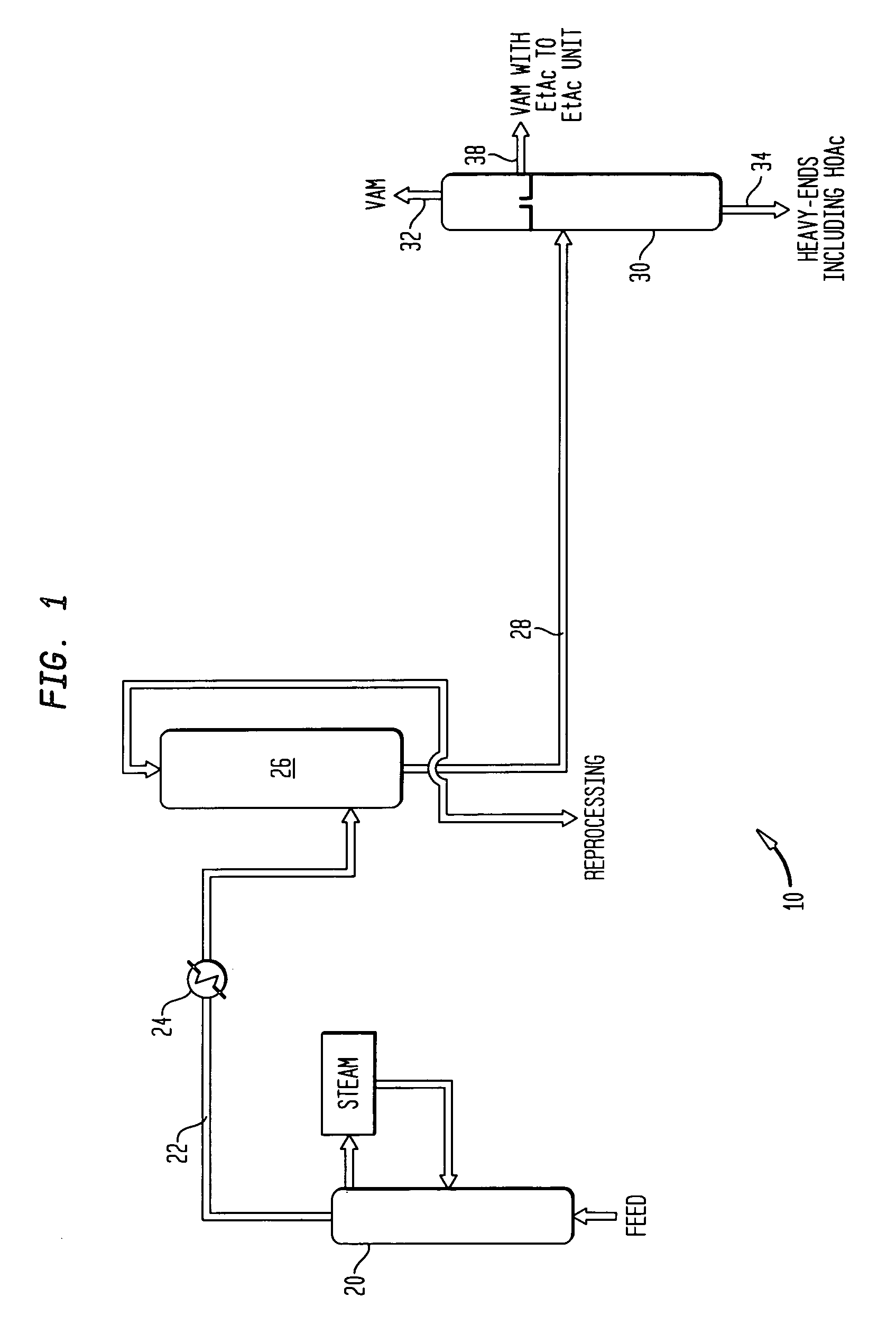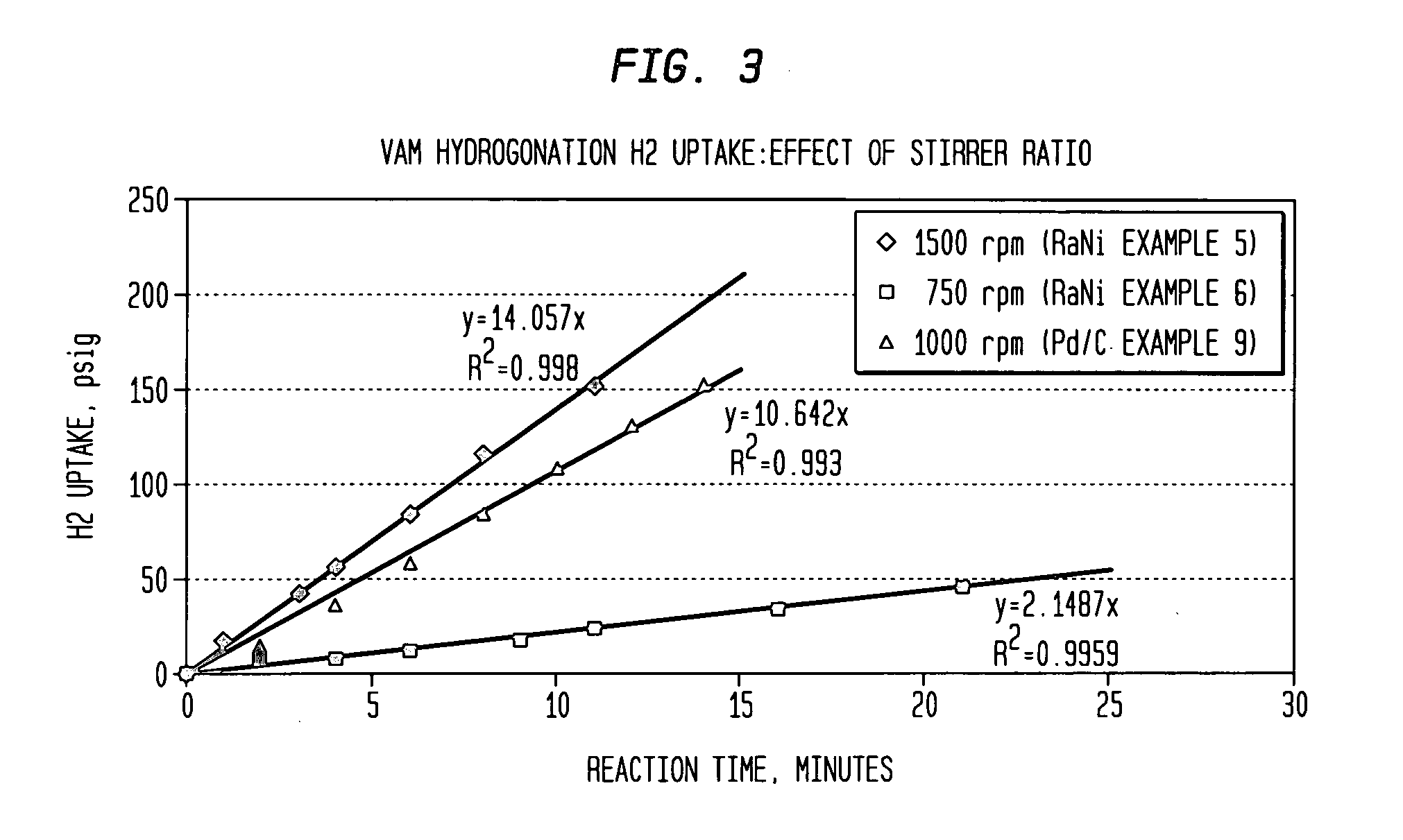Co-production of vinyl acetate and ethyl acetate
a technology of ethyl acetate and co-production process, which is applied in the direction of physical/chemical process catalysts, metal/metal-oxide/metal-hydroxide catalysts, organic chemistry, etc., can solve the problem of relatively high cost of direct addition process for preparing ethyl aceta
- Summary
- Abstract
- Description
- Claims
- Application Information
AI Technical Summary
Benefits of technology
Problems solved by technology
Method used
Image
Examples
examples
Hydrogenation of VAM to EtAc
[0059] General Procedure: A 300 ml autoclave with stirrer was configured as a batch hydrogenation reactor for testing both Raney Nickel and Pd / C hydrogenation catalysts with either para-benzoquinone inhibited VAM or a synthetic sidestream VAM mixture. Hydrogen uptake was measured by pressure changes in a ˜2500 ml H2 reservoir used to feed the reactor H2 through a pressure control valve used to maintain a constant reaction pressure set-point. Temperature control was generally accomplished by the flow of chilled water through an internal autoclave-cooling coil after initiation of the reaction by starting the stirrer. Reaction samples were collected from the reactor via a sintered stainless steel filtering element placed in the autoclave. Reaction charges, conditions, experimental data, and reactor sample analyses were included in Table 3 (attached). Reaction times (minutes) listed in Table 3 refer to the H2 uptake time. A preliminary run was made without a...
PUM
| Property | Measurement | Unit |
|---|---|---|
| weight percent | aaaaa | aaaaa |
| particle size | aaaaa | aaaaa |
| mole ratio | aaaaa | aaaaa |
Abstract
Description
Claims
Application Information
 Login to View More
Login to View More - R&D
- Intellectual Property
- Life Sciences
- Materials
- Tech Scout
- Unparalleled Data Quality
- Higher Quality Content
- 60% Fewer Hallucinations
Browse by: Latest US Patents, China's latest patents, Technical Efficacy Thesaurus, Application Domain, Technology Topic, Popular Technical Reports.
© 2025 PatSnap. All rights reserved.Legal|Privacy policy|Modern Slavery Act Transparency Statement|Sitemap|About US| Contact US: help@patsnap.com



